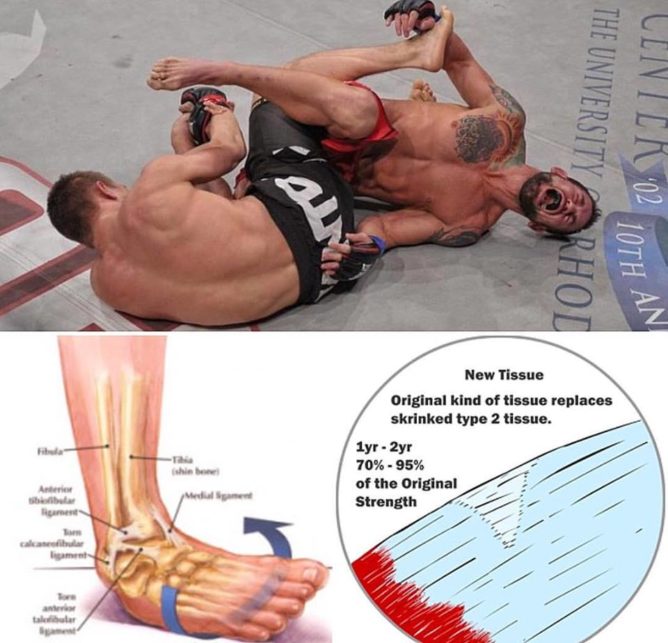Guest post by Dr Kickass, Mike Piekarski, a Doctor of Physical Therapy, Former MMA Fighter, Brazilian Jiu Jitsu brown belt. Follow him on instagram.
A common misconception with injuries is that when you no longer have pain then it is healed right? The most common predictor of an injury is previous injury, likely because the athlete returned when they no longer had pain, instead of following a thorough rehabilitation cycle. Clinicians, coaches and athletes have to respect tissue healing times of the structures damaged.
.
In regards to combat sports most joint locks challenge connective tissues : ligaments and capsule. Let’s look at the ankle: following an ankle sprain or in the context of Jiu jitsu following a foot lock injury (ankle lock, toe hold or heel hook).
1️⃣If it doesn’t hurt how has it not healed yet?
“Remodeled ligament tissue is morphologically and biomechanically inferior to normal ligament tissue [and], ligament laxity results (Hauser, Dolan 2011).”
2️⃣How do ligaments heal? Just like muscle they heal via appropriate stress so adaption can occur.

?️Pain free ROM: “Motion causes an increase of blood flow to the affected joint, providing the damaged ligament tissue with nutrients and metabolites necessary for tissue repair and healing. Under loading conditions, cells within the ligament detect tissue strains and respond by modifying the tissue (Hauser, Dolan 2011)”. Personally I used controlled articular rotations in a pain free range. Gradually expanding the range (which may take days/weeks depending on the severity of damage).
?️Isometric contractions: “Repetitive loading on injured [ligaments and tendons] has profoundly beneficial effects including enhanced cellular synthetic and proliferative effects, increased strength, size, matrix organization and collagen content of ligaments and tendons (Hauser, Dolan 2011).
Initially perform isometric contractions in neutral and gradual expand into end-range, for the ankle specifically plantarflexion/inversion. This way the ligaments can be safely stressed for adaption to occur.
.
Don’t let an injury become a chronic problem

















